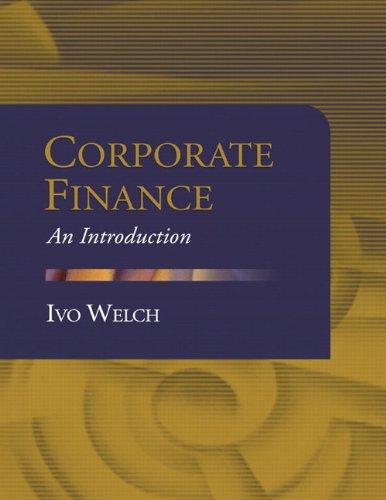Here is another winners curse example. A painting is up for auction. There are 5 bidders, you
Question:
Here is another winner’s curse example. A painting is up for auction.
There are 5 bidders, you among them. Each bidder has a private signal
(opinion) about the value of the painting. One of them overestimates the value by 20%, another by 10%, another estimates its value correctly, and two underestimate the value by 15%.
(a) Is the average private value equal to the expected painting value?
(b) You do not know the value of the painting, but believe it to be worth $150. The distribution of bidders’ relative valuations is still 20%, 10%, 0%, −15%, and −15%. What should be your absolute maximum bid before you expect to lose money?
(c) ADVANCED: What should you bid in a real-world auction in which each investor has a normally distributed signal with mean of $100
(the true value) and standard deviation of $10? (In real-world applications, you must judge the reasonable uncertainty that each bidder has around the true value.) Your spreadsheet can draw such a normally distributed random value with norminv( rand(), 100, 10). In each row, have five such entries (columns A–E), one for each of the five bidders in the auction. In column (F), write down how much the maximum bidder believes the painting to be worth. (Hint: Use max(A:E) in this column.) Create 1,000 such rows, and compute the average highest bid.How biased is it?What would you expect to earn if you bid your private opinion? (You could repeat this with more or fewer bidders and graph the estimate of the winning unbiased bid against the true value—what should you bid on eBay, where there may be a thousand bidders?)
Step by Step Answer:







